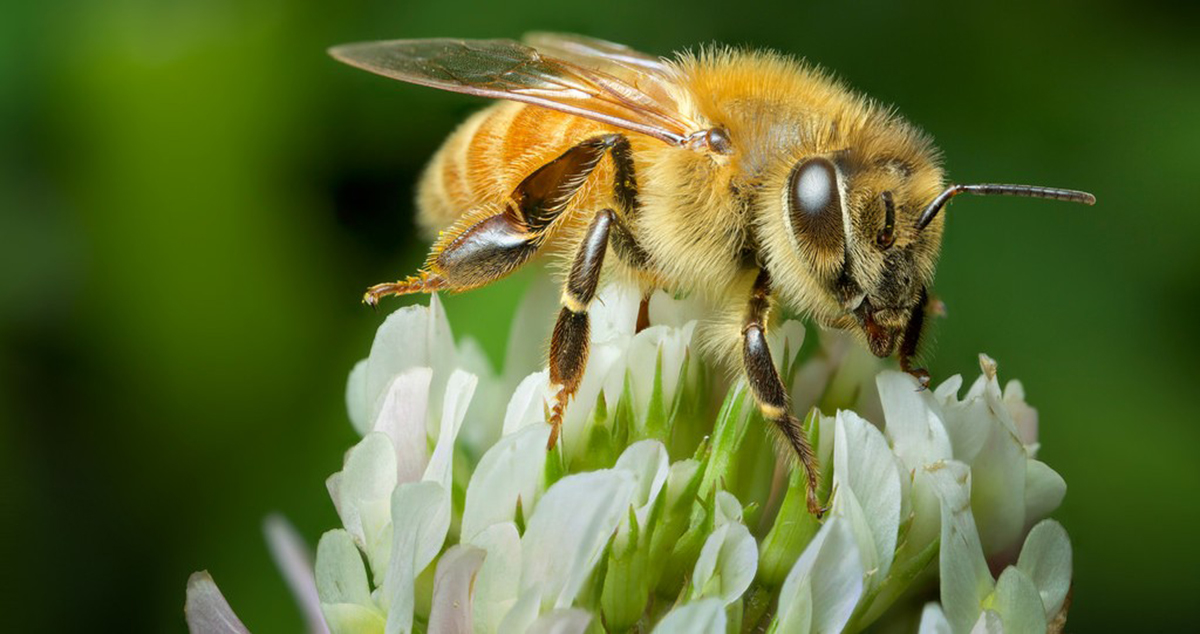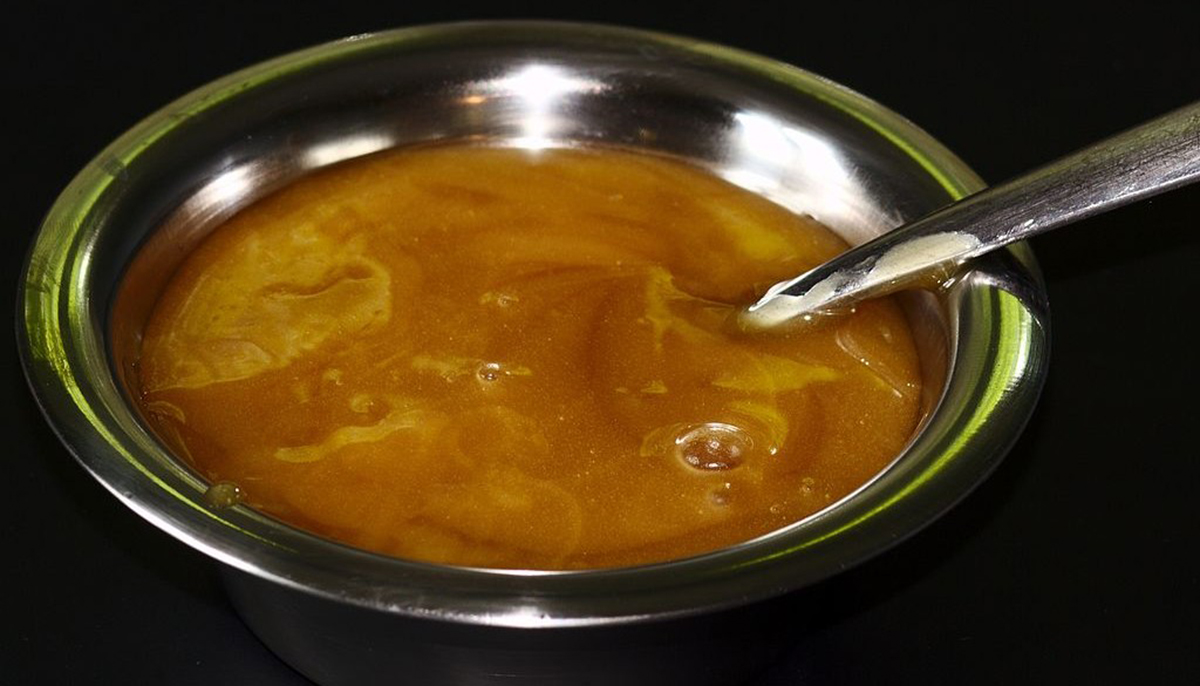Manuka honey gets world-wide attention for its power in healing the skin. Manuka honey is a mono-floral honey, that is, bees produce from the nectar and pollen of just one plant, Leptospermum scoparium, a species of flowering myrtle that grows on the western coast of New Zealand and the eastern coast of Australia. In New Zealand the plant is known by its Maori name, manuka, while in Australia the plant is known as the tea tree.

The essential oils of the manuka plant are well known for their ability to fight the bacteria that cause acne and staph and strep infections. When bees harvest pollen and nectar to make honey, the resulting product retains many of the antibacterial properties of tea tree oil with an added ability to stop the production of bacterial films on the skin. Manuka honey stops bacteria from "clumping" into a continuous layer over the skin, magnifying their toxic effects on the skin.
And while manuka honey can be used straight from the jar for treating skin infections and for stimulating the healing of broken skin, some of the most powerful applications of manuka are found when it is combined with conventional skin medications:
- Methicillin-resistant Staphylococcus aureus, also known as MRSA, which is usually transmitted in locker rooms and showers or in hospitals, is extremely difficult to treat with conventional antibiotics. Manuka honey makes MRSA more susceptible to the antibiotic oxacillin. In one trial, oxacillin only killed MRSA when the skin was pretreated with manuka honey.
- Most kinds of honey contain small amounts of an antibacterial compound called methylglyoxal, but manuka honey contains 2 to 3 times as much. In one clinical trial, small amounts of manuka honey applied to the gums killed gingivitis bacteria, while much larger amounts of other kinds of honey were required for a similar effect.
- Deep burns (which you should always have treated by a doctor) tend to get larger several days after the burn, due to the spreading of inflammation from the burn site as the immune system clears out dead and damaged cells. In a clinical trial in Japan, manuka honey reduced the enlargement of deep burns when applied as part of the initial dressing of the wound.
- At least in laboratory tests, manuka honey controls the multiplication of the varicella zoster virus, the virus that causes shingles. Manuka honey is a potential treatment for shingles.
See Also: How To Recognize Real Honey
It can be the key to getting good results in treating MRSA with antibiotics. You can dab manuka honey on your gums to help clear up gingivitis, and this honey can be used to stimulate the healing of burns, cuts, scrapes, and scratches, and to relieve the pain of shingles.
Other kinds of honey, however, don't heal like manuka honey. You shouldn't necessarily expect these results in skin care if you aren't using certified, real manuka honey from New Zealand.
What Are The Special Benefits Of Other Kinds Of Honey?
Manuka honey isn't the only kind of honey used in healthcare. If you want to use honey in clearing up a skin problem, you should go with New Zealand manuka honey, but other honeys have other proven uses. Here are some examples:

- New Zealand also produces kanuka honey, produced by bees that feed on the kanuka tree, Kunzea ericoides. Kanuka trees grow at a higher elevation than the coast-loving manuka bushes. Parakeets rub their feathers on the leaves of the kanuka treee to get rid of parasites. And laboratory studies have found that kanuka honey is even more potently anti-inflammatory than manuka and other honeys. Kanuka honey is best used to prevent chronic wounds. It doesn't have to be applied right away after a wound forms to be beneficial.
- Clover honey is produced around the world. Clover honey does not have the same antibacterial power as manuka and kanuka honeys, but it is useful for controlling fungal infections of the skin. If you have athlete's foot, an inexpensive and effective treatment is clover honey, applied in a very thin layer over the food, and tea tree oil, covered by a dry sock and a clean shoe.
- Longan honey and sourwood honey produced in Malaysia are excellent sources of dietary antioxidants. They are more beneficial to health if they are eaten than if they are applied to the skin.
- Propolis, strictly speaking, is not honey. It is a collection of waxy resins that bees use in construction in their hives. Propolis, however, has potent antimicrobial and immunostimulant properties, no matter where it is collected. Propolis has antibacterial potency against staph, strep, Pseudomonas, and E. coli bacteria, and it is also used to treat colds and flu. It can be used with success to treat vaginal yeast infections. It may offset some of the pro-inflammatory effects of a high-fat diet (although it's always better simply to reduce the amount of fat consumed in the diet). Brazilian propolis is used to treat sneezing, wheezing, hay fever, and asthma, and Korean propolis is used in skin care products designed to treat browning of the skin after excessive sun exposure.
See Also: Miraculous Moringa Tree Leaves
Honey and propolis don't replace skin cleansing, exfoliation, and benzoyl peroxide in controlling acne. If you want to use honey to treat a burn or a wound, be sure you use MediHoney wound dressings or medical honey you squeeze from a tube. You don't want to lick from the jar and then use honey to dress a wound on your skin. Medicinal honey for treating skin care problems is significantly more expensive than honey for table consumption, but it can be exactly what you need when conventional treatments aren't enough.
- Nakajima Y, Mukai K, Nasruddin, Komatsu E, Iuchi T, Kitayama Y, Sugama J, Nakatani T. Evaluation of the effects of honey on acute-phase deep burn wounds. Evid Based Complement Alternat Med. 2013. 2013:784959. doi: 10.1155/2013/784959. Epub 2013 Nov 17. PMID: 24348720.
- Tomblin V, Ferguson LR, Han DY, Murray P, Schlothauer R. Potential pathway of anti-inflammatory effect by New Zealand honeys. Int J Gen Med. 2014 Mar 5, 7:149-58. doi: .10.2147/IJGM.S45839. eCollection 2014. PMID: 24623989.
- Photo courtesy of Andy Murray by Flickr : www.flickr.com/photos/89396233@N00/12622731023
- Photo courtesy of Sage Ross by Wikimedia Commons : commons.wikimedia.org/wiki/File:Manuka_honey_in_a_bowl.jpg


Your thoughts on this